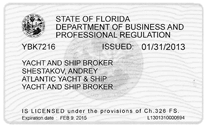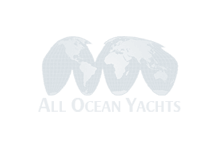Sailing yachts
Various Types of Sailing Yachts Revealed - There is a large number of sailing yacht classifications acknowledged by the experts, distinguished by their safety class, hull types and number of hulls, construction material, rigging type, number of masts/sails, ballast, and purpose. We will discuss these classes herein.
Sailing Yacht Safety Classes
There are four (4) yacht safety classifications used to categorize both motor and sailing vessels.
- Class A - Vessels of this class are big oceanic watercrafts, totally autonomous, capable of withstanding winds exceeding the 8th level of force and waves higher than 4 meters, also suitable for long-distance voyages.
- Class B - This class is comprised of nautical sailing yachts, unsuitable for long-distance ocean voyages, but strong enough for winds up to the 8th level and waves lower than 4 meters.
- Class C - Under this classification, you will find all of the smaller coastal yachts frequently used in bays, rivers and lakes, capable of challenging winds up to 6 points and waves as grand as 2 meters high.
- Class D - This class contains sailing yachts used in smaller bodies of water, channels and rivers, safe enough to sail in level 4 winds and waves of 0.5 meters high.
Hull Types and Number of Hulls:
Let’s begin with the three (3) hull types of sailing yachts:
- Displacement Yachts – These hulls are V-shaped and plunge deep beneath the water surface, allowing enhanced stability and best suited for low-speed cruises in any weather. This type is favored for their ability to withstand waves and strong winds.
- Planing Yachts - The bow or forward-most part of the hull is raised during the motion, enhancing hydrodynamics and increasing speeds. This type of “gliding” movement is common in race boats.
- Semi-Displacement Yachts – This type is the “golden mean” between planing and displacement hulls.
A sailing yacht may have single or multiple hulls, as follows:
- Single-hull yachts (the name speaks for itself)
- Catamarans (two connected hulls)
- Trimaran (three hulls with the largest at center)
Hull Composition and Construction Materials:
- Wood
- Composite (carbon or fibre-plastic resin)
- Metal (aluminum or steel)
- Ferro-cement
- Mixed materials
Two Types of Yachts Classified by Rigging:
- Straight - Straight rigs are used on larger ships. They typically have a trapeze-shaped sail formation. With this type of rigging, the yacht can only move with the tail wind or under a 60-70 degree angle deviation, ideal for heavy yachts.
- Slant - The lighter sailing yachts, with crew of one to three people, typically sport the slant rig. Slant rigs have two types of sails:
- Gaff Sail - A trapezoid-shaped sail with a gaff (slant wooden spar) on top to which the upper end of the sail is attached. The other two ends are secured to the horizontal wooden spar and the boom.
- Bermuda Sail - A triangular sail without a gaff. The forward portion is attached to the mast, and the bottom to the boom. It is a much simpler sail and often used on light yachts.
Note: There are also lug sails, also referred to as sprit sails, which use special lug yards and sprits, in lieu of the gaff. Such rigs are usually seen on dinghies.
Sailing Yachts Classified by Number of Masts/Sails:
-
Single Mast Yachts
- Catboats - Yachts with one mast and a mainsail. Cat rigs are usually placed on small yachts with a small sail (no more than 10 sq.m). It is a rather convenient rigging for boats, manned by one or two persons. Even one person is capable of handling such yacht.
- Sloops - Yachts built to catch the wind at good heights, while maintaining a smaller stature (sail area up to 60 sq.m). They can have both Bermuda and gaff sails. The sloop has a mainsail and the auxiliary forward sail, or the staysail.
- Tenders - Vessels with large sails (more than 60 sq.m) are equipped with a tender, a rig with many head sails. Here you have your staysail, jib, and topsail. A tender can carry Bermuda and Gaff sail rigs.
-
Two Mast Yachts
- Yawls - Yawls are rigged on midsize cruising yachts (up to 100 sq.m of sail area). Beside the mainmast, such ships are usually equipped with a shorter mizzenmast carrying the mizzensail. The mizzensail can be either a Bermuda or gaff type, differing from the mainsail by shape. Its aftsail is very small, taking up only 10% of the total sail area.
- Ketch - Ketches are also equipped with a mizzenmast and sail; however, its sail is slightly larger, making up 25% of the sail area. The mizzensail can be of two types, as well – the gaff and the Bermuda.
- Schooner - Schooner is a sail rig of large yachts (sail area up to 200 sq.m), equipped with two masts: the forward foremast and the mainmast aft.
Sailing yachts may also differ by the way their ballast is distributed:
- Keelboats
- Retracting keel boats
- Centerboard boats
- Leeboards
- Bilgeboard boats
Sail yachts differ also by usage requirements and purpose:
- Megayachts (for long-distance voyages)
- Heavy cruising yachts
- Day cruisers
- Racing cruisers
- Racing yachts for open seas
- Offshore racing boats
Note: The intended purpose of the yacht directly affects its form and material, as evidenced by racing yachts made with planing hulls and day cruisers made of composite material.
Official Classification:
A “classification society” is an organization that regulates technical standards of yacht design and construction. Each society has its own maritime rules, regulations and requirements. A yacht’s acceptance into a particular society means that the vessel has met all standards upheld by this society.
We can distinguish the standards of the following societies:
- ABS - American Bureau of Shipping
- BV- Bureau Veritas
- CCS - China Classification Society
- DNV - Det Norske Veritas (Norway)
- GL - Germanischer Lloyd (Germany)
- KR - Korean Register of Shipping
- IRS - Indian Register of Shipping
- LR - Lloyd's Register (London)
- NK - Nippon Kaiji Kyokai (Tokyo)
- RINA - Registro Internacional Naval (Lisbon)
- RS - Russian Maritime Register of Shipping
“We aim to educate the potential yachtsman because an educated buyer is a happy buyer!”
Andrey Shestakov
-
morePerini 47-m 154' 3" PERINI NAVI 2026 €39,500,000 EUR
-
moreECO YACHT 145 145' WIDER 2025 €29,700,000 EUR
-
moreRunning On Waves 210' GDANSK 2011 €17,500,000 EUR
-
moreECO YACHT 115 115' WIDER 2025 €17,500,000 EUR
-
moreESCAPADE 123' 1" FITZROY YACHTS 2014 €13,750,000 EUR
-
moreESCAPADE 123' 1" FITZROY YACHTS 2014 €13,750,000 EUR
-
more115' 2008 Yapluka 115' 2" YAPLUKA 2008 €12,800,000 EUR
-
moreMirasol 147' 8" DANISH YACHT/HOLLAND JACHTBOUW 2014 €12,500,000 EUR
-
more102' 2007 Blubay 102 102' BLUBAY ARGO BOATS 2007 €12,000,000 EUR
-
more100' 2008 Yapluka 100 DD 100' YAPLUKA 2008 €10,700,000 EUR
-
moreECO YACHT 90 90' WIDER 2025 €9,700,000 EUR
-
moreELLEN 132' 7" PERINI NAVI 2001 €9,300,000 EUR
-
moreAntara 152' PERINI NAVI 1991 $9,100,000 USD
-
moreThat's Amore 140' 9" TURKISH GULET 2023 €7,950,000 EUR
-
moreMISS SILVER 118' 7" ALLOY YACHTS 1995 €7,950,000 EUR
-
moreTrue North 81' 1" SUNREEF 2020 $8,899,999 USD
-
more2022 Sunreef 80 Sailing 78' 3" SUNREEF 2022 $8,750,000 USD
-
moreSulita 78' 9" NAUTOR SWAN 2019 €6,500,000 EUR
-
more85' 2008 Yapluka 85 Double Deck 85' YAPLUKA 2008 €6,350,000 EUR
-
moreSERAFIM 101' 1" OYSTER MARINE LTD 2012 €6,300,000 EUR
-
moreMITI ONE 111' 9" BODRUM OGUZ MARIN 2021 €6,290,000 EUR
-
moreSeaclusion 80' SUNREEF 2020 $6,500,000 USD
-
moreANEMOI 123' 1" FITZROY YACHTS 2005 $6,500,000 USD
-
moreFRIDAY 99' 3" SOUTHERN WIND SHIPYARDS 2010 €5,250,000 EUR
-
moreELSSA 67' 2" ICE YACHTS 2020 €5,000,000 EUR
-
moreCORSARIO 157' 6" RADEŽ D.D. 2019 €4,950,000 EUR
-
moreS/Y Tamarita 152' 11" PERINI NAVI 1991 €4,950,000 EUR
-
moreBelkara 91' 8" CONRAD SHIPYARD 2016 €4,950,000 EUR
-
moreENSO 82' 7" OYSTER MARINE LTD 2016 €4,500,000 EUR
-
more75' 2008 Yapluka Luxury Catamaran 73' 3" YAPLUKA 2008 €4,380,000 EUR
-
morePURA-VIDA 124' 9" TURKISH GULET 2021 €4,250,000 EUR
-
more72' 2007 Blubay 72 GP 72' BLUBAY ARGO BOATS 2007 €4,200,000 EUR
-
moreYCH2 90' 11" NAUTOR SWAN 2009 €4,100,000 EUR
-
moreLADY 8 95' 2" CNB YACHTS 2008 €3,950,000 EUR
-
moreMy Star 115' 2" ALLOY YACHTS 1994 €3,950,000 EUR
-
moreCarbon Fiber Luxury Catamaran 68' MCCONAGHY 2023 $4,452,441 USD
-
moreWHIMSEA 100' 1" CNB YACHTS 2009 €3,900,000 EUR
-
more2021 Sunreef 60 60' SUNREEF 2021 €3,550,000 EUR
-
moreIllusion of the Isles 101' 9" SOUTHERN WIND SHIPYARDS 2006 €3,490,000 EUR
-
moreRELENTLESS 60' SUNREEF 2020 $3,900,000 USD
-
moreCNB 78 New Order 81' 7" CNB YACHTS 2024 €3,440,000 EUR
-
moreCNB 78 New Order for USA Delivery 81' 7" CNB YACHTS 2024 €3,440,000 EUR
-
moreMAGIC CAT 82' MULTIPLAST 1995 €3,400,000 EUR
































































